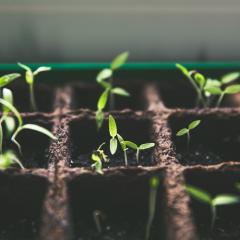Rodríguez-Cruz: What life in Culebra shows us about access to seafood
Luis Alexis Rodríguez-Cruz, along with collaborators Emmanuel Maldonado-González, Nathania Martínez, and Nicolás X. Gómez Andújar, were commissioned by the Culebra Fishing Association, Inc. to conduct a participatory study exploring questions around what type of actions are needed to improve access to seafood in Culebra, Puerto Rico.
Culebra is an island municipality located east of Puerto Rico's Isla Grande, where the food supply chain is weak, there is limited investment and available land for agriculture, and the sea is an increasingly important source of food and income for local residents. “However, in both Culebra and the capital, government policies favor the tourism industry and large economic interests, which have contributed to the high cost of food and have caused other challenges, such as displacement”, the authors write for 9 Milliones.
“So, how do changes in infrastructure and the environment affect access to the sea? What helps or hinders residents from getting fresh seafood? And how do these factors change depending on who you are and your social conditions? Finally, what can be done so that people in Culebra can continue to buy or catch fresh fish, shellfish, and mollusks?”
Rodriguez-Cruz’s team brought a focus group of residents to explore answering these questions. With the challenges such as gentrification, building of illegal docks, tourism, deforestation and construction well understood, the group participated in “a future-oriented guided activity, in which attendees imagined scenarios of change and discussed collective strategies to address tourist gentrification and the loss of affordable housing.”
The activity helped residents identify common ground toward addressing community challenges around access to local fish, ranging from practical to transformative actions.They found that “It is possible to develop projects that are managed by and in vulnerable coastal communities. Even amid a sea of challenges, there are mechanisms—safe harbors—where to anchor.”
“it is crucial that the challenges are understood as intertwined, and that the solutions are not decided without taking into account the knowledge of these fishing communities. Having adequate public infrastructure on the coast, while safeguarding natural resources, is of vital importance for the well-being of the community. This project is a tool to visualize and address the needs of our coastal communities, which are at risk due to gentrification and limited access to the sea and local fish.”
Read their full report to dig deeper into the intertwined challenges, solutions and community engagement efforts around this project.



